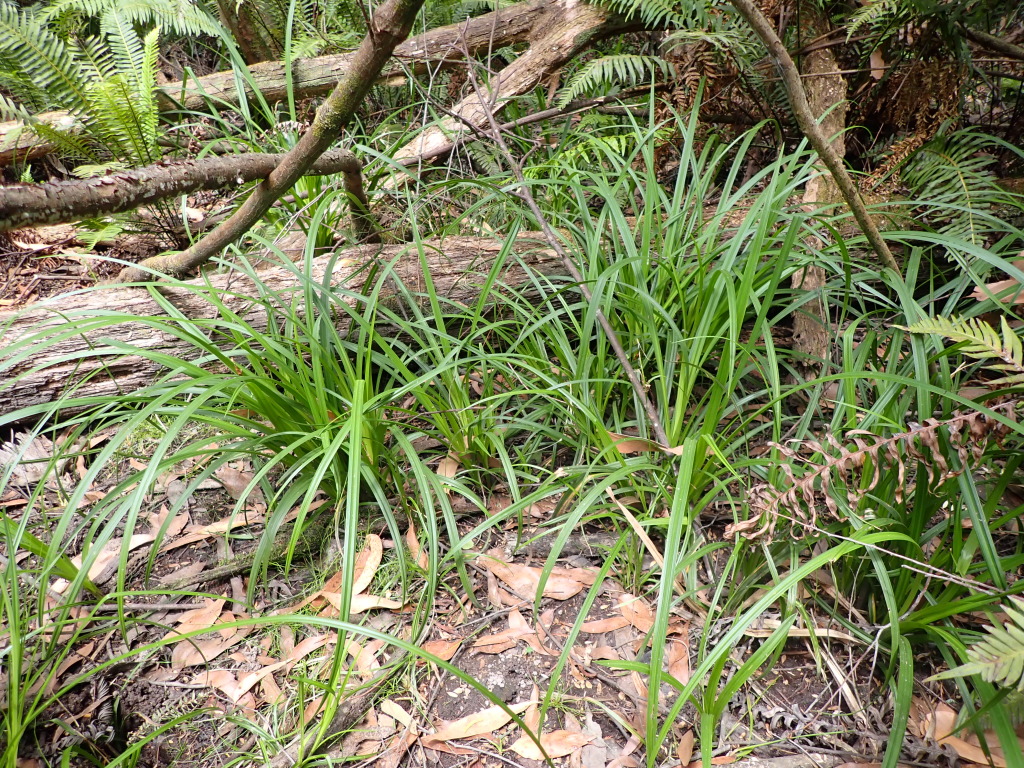Carex alsophila
F.Muell. Forest SedgeRhizome short; shoots densely tufted. Culms erect, triquetrous, smooth or scabrous, (30–)45–100 cm long, 1.5–2.5 mm diam. Leaves exceeding culms, to 10 mm wide, septate-nodulose (obvious when dried), mid green on both surfaces; sheath pale brown, often tinged red-brown; ligule 10–15 mm long, acute. Inflorescence narrow, erect, 17–20 cm long, with spikes solitary at nodes; lowest involucral bracts exceeding inflorescence. Spikes sessile or short-pedunculate, distant, erect to spreading at maturity, 3–5 cm long; upper 1–4 spikes entirely male or rarely uppermost spike with female flowers above; lower spikes entirely female or with male flowers above; male glumes obtuse, hyaline and erose, light brown, often tinged red-brown, mucro absent ot to 0.2 mm long; female glumes acuminate to obtuse, often shortly mucronate, green tinged red-brown, with irregularly hyaline margins, 4–6 mm long, mucro 0.5–1 mm long; utricles 4–6 mm long, 1.5–2 mm diam., ovoid, strongly but irregularly few-nerved, glabrous, green, with beak 0.7–1.5 mm long, with apex notched or bifid and often minutely hispid; style 3-fid. Nut obovoid, trigonous, pale yellow. Flowers summer.
GipP, HSF, HNF, VAlp. Endemic in Victoria where occurring in mountain gullies and swamps between Gembrook, Alexandra and Erica, but often locally rather common.
Wilson, K.L. (1994). Cyperaceae. In: Walsh, N.G.; Entwisle, T.J., Flora of Victoria Vol. 2, Ferns and Allied Plants, Conifers and Monocotyledons, pp. 238–356. Inkata Press, Melbourne.
 Spinning
Spinning